Solar cooking works best between 11:00 AM and 3:00 PM on clear, sunny days, reaching temperatures up to 350°F. You'll need to double your cooking time on partially cloudy days when temperatures drop to 200-250°F, and triple it during heavy overcast conditions. Wind can greatly impact efficiency, so stabilize your cooker with heavy stones or bricks. For ideal results, use dark cookware and preheat your solar oven while monitoring food temperature throughout cooking. Humid conditions require moisture-resistant covers and proper ventilation to combat heat loss. Understanding these weather variables will transform your solar cooking success.
Weather Impact on Solar Cooking
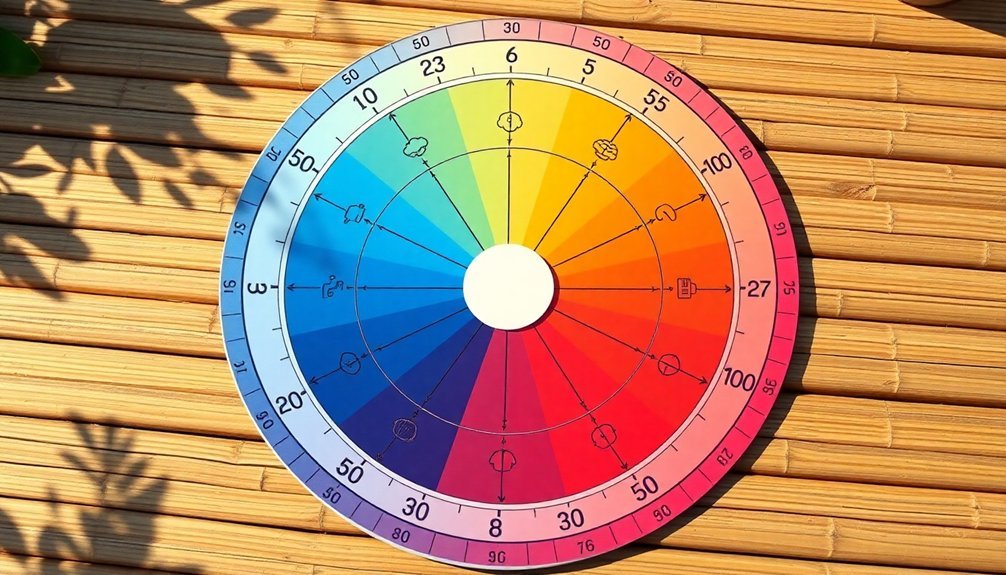
When it comes to solar cooking, weather conditions play a decisive role in your cooking success.
You'll achieve the best results on clear, sunny days between 11:00 am and 3:00 pm, reaching temperatures up to 350°F for efficient cooking of diverse dishes.
On partially cloudy days, you'll need to adjust your expectations and timing.
While you can still cook meats, rice, and vegetables at 200-250°F, you'll need twice the cooking time and more frequent positioning adjustments.
Cold temperatures won't greatly impact your solar cooking if your cooker is well-insulated, but cloudy, rainy, or foggy conditions will drastically reduce effectiveness. You can successfully cook even on days with frostbite warnings if there's bright sunshine.
When temperatures drop below 200°F in these conditions, you're better off choosing an alternative cooking method or waiting for clearer weather.
Seasonal Temperature Adjustments
Just as daily weather affects your solar cooking success, each season brings unique challenges and opportunities.
Summer offers the most efficient cooking conditions, with peak hours between 10 AM and 2 PM reaching up to 350°F. Weather-conscious cooks can expect 1.5 to 3 times longer cooking periods compared to conventional methods. You'll enjoy shorter cooking times and less frequent adjustments.
Winter requires more attention, as you'll need to reposition your cooker often to track the sun's lower path. Adding thermal mass helps maintain temperatures between 200-350°F during the peak window of 11 AM to 3 PM.
Spring provides excellent flexibility, with temperatures up to 300°F and high-performance units potentially reaching 750°F.
Fall presents the greatest challenges, with temperatures typically ranging from 140-160°F. You'll need extra patience during this season, often planning multi-day cooking sessions to compensate for reduced sunlight intensity.
Cloud Cover Cooking Times
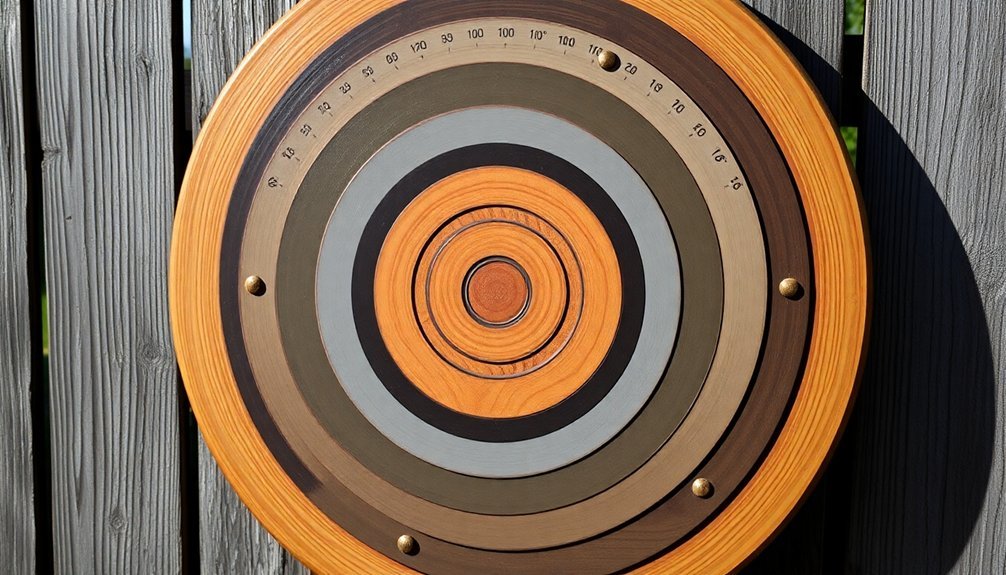
You'll find that light cloud cover extends cooking times by roughly 50%, while heavy overcast can triple your usual cooking duration.
When working with mixed weather conditions, you can boost efficiency by cutting ingredients smaller and using reflectors to capture more sunlight. Peak sunlight intensity occurs between 11:00 a.m. and 3:00 p.m., making these hours optimal even on cloudy days.
Your best strategy is to monitor temperatures closely and rotate the cooker frequently to follow the sun's path, even during partially cloudy periods.
Light Cloud Effects
Although cooking with a solar cooker works best on clear days, light cloud cover doesn't mean you can't prepare a meal.
You'll need to adjust your cooking times, as clouds reduce the intensity of sunlight reaching your cooker. Expect your meals to take 1.5 to 3 times longer than usual, depending on cloud conditions.
To optimize your cooking results under light clouds:
- Position your cooker directly facing the sun and adjust its position throughout the day
- Use dark-colored cookware to maximize heat absorption
- Cut ingredients into smaller pieces to reduce cooking time
- Keep the cooker well-insulated and tightly sealed to maintain temperature
The type of solar cooker you're using matters greatly.
Parabolic and vacuum tube designs, like the GoSun, perform better in cloudy conditions compared to simple box cookers, thanks to their superior insulation and reflective properties.
Heavy Overcast Adjustments
During periods of heavy overcast, solar cooking becomes extremely challenging and often impossible. You'll need to monitor weather forecasts and have backup cooking methods ready for these conditions.
When there's limited sunlight, you can optimize your solar cooker by using enhanced insulation and maximizing heat retention. Pre-soak ingredients and choose quick-cooking foods like rice or lentils to work with available sunlight windows.
| Cooking Conditions | Adjustment Needed |
|---|---|
| Light Overcast | 1.5x normal time |
| Medium Overcast | 2x normal time |
| Heavy Overcast | Not recommended |
For marginally sunny periods, position your cooker on a dry, level surface and adjust reflectors frequently to capture maximum sunlight. Use dark-colored cookware and thermal mass materials like rocks to improve heat retention. Focus your cooking efforts during peak sun hours (10:00 a.m. to 2:00 p.m.) for best results.
Mixed Weather Solutions
When scattered clouds drift across the sky, your solar cooking times will fluctuate based on the frequency and density of cloud cover.
You'll need to multiply your usual cooking duration by 1.5 to 3 times, depending on conditions. A dish that normally takes 2 hours might require up to 4 hours in mixed weather.
To optimize your solar cooking during variable conditions:
- Preheat your oven for at least 30 minutes before adding food
- Use reflectors with aluminum foil or Mylar tape to maximize available sunlight
- Rotate your cooker every 30 minutes to track the sun's position
- Add thermal mass like rocks or bricks to maintain stable temperatures
Advanced solar vacuum tube cookers can help offset mixed weather challenges, as they're designed to capture diffuse light and retain heat effectively, even in light overcast conditions.
Wind Effects and Solutions
Since wind poses a significant challenge for solar cookers, understanding its effects and implementing proper solutions is crucial for successful operation.
You'll need to stabilize your cooker using heavy stones or bricks, especially in areas with moderate winds. Position your cooker to minimize direct wind exposure and make certain no parts are jutting out that could catch the wind.
Consider using thicker materials and double-glazed glass for better insulation against wind-induced heat loss. If you're in a particularly windy region, you might need a heavier model, though this could increase cooking times.
Monitor wind conditions with an anemometer and adjust your cooker's orientation accordingly. Regular maintenance checks will help guarantee all components remain secure and effective at withstanding wind forces while maintaining peak cooking temperatures.
Humidity and Solar Performance
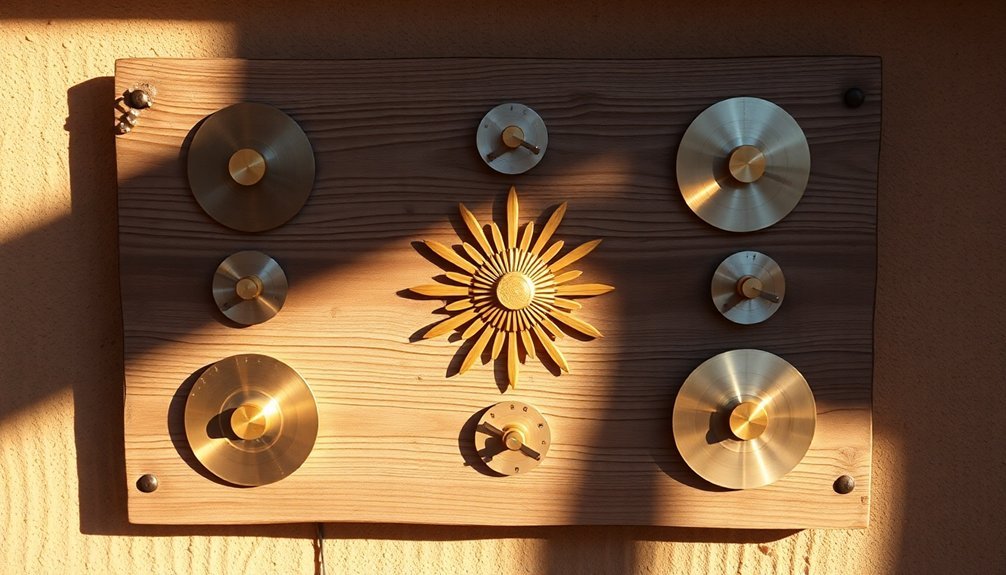
You'll notice your solar cooker's heating efficiency drops considerably in humid conditions as moisture in the air increases heat loss and slows down the cooking process.
To combat condensation problems, you can protect your cooker with a moisture-resistant cover and guarantee proper ventilation during use.
When cooking in humid climates, plan for longer cooking times and consider using a humidity sensor to help you choose the best times for solar cooking.
Moisture Impact on Heating
High humidity poses significant challenges for solar box cooker performance by increasing heat loss and reducing overall efficiency.
When moisture saturates your cooker's chamber, it compromises the greenhouse effect and makes it harder to maintain ideal cooking temperatures. You'll notice decreased heat retention and slower cooking times as humidity levels rise.
Key moisture impacts on your solar cooker's heating performance:
- Water vapor blocks sunlight from reaching the absorptive surface, reducing solar radiation absorption by 10-20%
- Humid air promotes faster heat loss through convection and conduction
- Moisture buildup can lead to corrosion and material degradation over time
- Temperature fluctuations from humidity may cause micro-cracks in your cooker's components
To counter these effects, verify your cooker has proper sealing and ventilation while maintaining reflective surfaces for maximum efficiency.
Condensation Control Methods
Managing condensation effectively in your solar box cooker can greatly enhance its performance and longevity. You'll need to balance moisture control with heat retention using proven methods like venting and moisture absorption.
| Method | Application |
|---|---|
| Lid Venting | Use a BBQ skewer between gasket and door, or loosen latches |
| Moisture Control | Drape dark towels over pots, place cloth under lids |
| Liquid Reduction | Cut recipe liquids by ¼ to ½ cup when possible |
Check your cooker regularly for condensation buildup and wipe excess moisture promptly. You'll want to minimize the time spent opening the lid during these checks. Remember to adjust your condensation control strategy based on your local climate and weather conditions. For best results, place your cooker in a sunny, wind-protected area while implementing these moisture management techniques.
Humid Climate Cooking Tips
Wondering how to enhance your solar cooking in humid conditions? You'll need to adapt your cooking strategy since humidity reduces solar cooker efficiency and extends cooking times. To achieve the best results in humid weather, position your cooker in a spot with maximum sun exposure and minimal shade.
For successful cooking in humid conditions:
- Use dark-colored pots with tight-fitting lids to maximize heat absorption
- Expect cooking times to extend by 30-50 minutes, especially for moisture-rich foods like rice
- Plan your cooking when ambient temperatures are between 30°C and 34°C for ideal performance
- Monitor your food more frequently, as temperatures typically won't exceed 100°C in humid weather
Remember to keep your cooker's seals and moisture barriers in good condition to maintain stable internal temperatures and minimize heat loss during cooking.
Direct Sunlight Cooking Guidelines
When cooking with a solar oven, you'll achieve the best results between 10:00 a.m. and 2:00 p.m. on clear or partially cloudy days.
Position your cooker in a spot that receives direct sunlight with minimal shadows, and adjust it every 1-2 hours to track the sun's movement.
You'll need at least 30-45 minutes of good sun exposure each hour for effective cooking.
Place your oven on a dry, level surface in a wind-sheltered area, and align the reflectors to maximize sunlight entry.
Remember to preheat your oven for 30 minutes before adding food.
For optimal efficiency, keep your reflectors and cover clean, and vent the box to prevent steam buildup.
Don't forget to protect your eyes from glare and use pot holders when handling hot cookware.
Altitude Temperature Variations

Your solar cooker's performance will shift noticeably between high and low altitudes, with cooking times typically shorter at higher elevations due to increased solar intensity and clearer skies.
At lower altitudes, you'll need to account for denser atmosphere and potentially more cloud cover, which can reduce the maximum temperatures your cooker achieves.
While high-altitude locations offer stronger solar radiation, you'll want to adjust cooking times to compensate for the lower boiling point of water at elevation, ensuring your food reaches safe cooking temperatures.
High-Altitude Heat Reduction
Understanding altitude's effect on solar cooking is essential for ideal performance at higher elevations. While water boils at lower temperatures in high-altitude locations, you'll find that increased solar radiation often compensates for this change.
The thinner atmosphere actually allows more direct sunlight to reach your solar cooker, which can enhance its efficiency.
To maximize your high-altitude solar cooking results:
- Adjust your cooking times to account for both lower boiling points and intense solar radiation
- Position your cooker more frequently to track the sun's direct rays
- Use parabolic or vacuum tube cookers for better heat concentration
- Take advantage of clearer skies by cooking during peak sunlight hours
Low-Altitude Temperature Maximums
Low-altitude environments present distinct temperature patterns that affect solar cooking performance differently than higher elevations. You'll find that temperatures at lower altitudes remain more stable due to denser air and greater atmospheric pressure, which can work to your advantage when solar cooking.
When you're cooking at low altitudes, pay attention to local factors that'll impact your solar cooker's efficiency. Buildings, trees, and other structures can create microclimates that alter temperature patterns.
You'll need to account for shade patterns throughout the day, as they'll affect your cooking times. Morning inversions may delay heating, so you'll often achieve better results during mid-day hours when the sun's radiation is strongest.
Watch for cloud cover and precipitation, as these conditions can greatly reduce your cooker's performance even at low elevations.
Elevation Cooking Time Impact
While cooking times generally increase as temperatures drop, higher elevations can actually speed up your solar cooking despite cooler ambient conditions. At higher altitudes, you'll experience more direct solar radiation due to less atmospheric interference, which means more concentrated energy reaches your cooker.
You'll find these key benefits when solar cooking at higher elevations:
- More intense UV rays reach your cooker, compensating for cooler temperatures
- Clearer skies and reduced atmospheric filtering enhance energy concentration
- Your food cooks faster due to increased solar radiation intensity
- Better cooking performance even in cold regions like Nepal and Tibet
To maximize these advantages, make sure your cooker has proper insulation and adjustable reflectors.
Position your cooker to capture ideal sunlight throughout the day, as the enhanced radiation at high altitudes can greatly improve your cooking efficiency.
Shade Management Strategies
Successful shade management forms the backbone of efficient solar cooking. You'll need to position your cooker on a level surface away from any potential shadows from trees, buildings, or other obstacles.
Watch the shadow of your finger or the cooker itself to guarantee proper alignment – it should form a right angle with the cooker's front edge when correctly positioned.
Track your cooker's shadow throughout the day and adjust its position every hour or two to maintain ideal sun exposure. You can verify proper alignment when the cooking pot's shadow disappears from the front of the cooker.
On windy days, stabilize your setup with stones or bricks to prevent unwanted movement. Remember to avoid cooking during early morning or late evening hours when shadows are longest and sun intensity is weakest.
Weather Forecasting for Solar Cooking
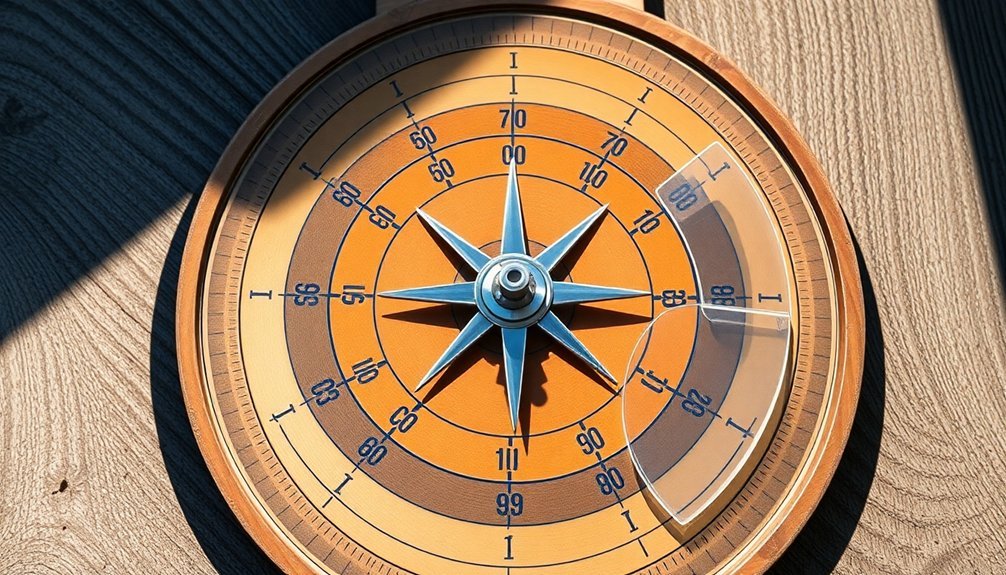
Checking weather forecasts before planning your solar cooking is essential for excellent results.
You'll need to monitor both daily and hourly predictions to maximize your cooking success. Clear, sunny days offer prime temperatures between 200°F to 300°F, while partially cloudy conditions still allow cooking at reduced temperatures.
- Look for forecasts showing unobstructed sun between 10:00 a.m. and 2:00 p.m., when solar cooking is most effective.
- Check seasonal sun positions for your location, as shorter shadows indicate better cooking conditions.
- Monitor cloud cover predictions, as overcast days aren't suitable for most solar cooking tasks.
- Review hourly temperature forecasts to plan cooking times, remembering that solar cooking typically takes twice as long as conventional methods.
Consider alternative cooking methods on heavily overcast days, when solar cooking isn't practical.
Emergency Weather Backup Plans
Since weather can be unpredictable, having reliable backup plans for your solar cooking setup is crucial.
You'll need multiple cooking alternatives ready when clouds, storms, or seasonal changes disrupt your solar cooking routine. Stock up on fuel for gas or charcoal grills, and maintain portable stoves as secondary options.
Keep at least two different types of solar cookers to adapt to varying weather conditions, and make sure you've got indoor cooking methods available.
Store pre-cooked or no-cook meals for times when all cooking methods are impractical. Regularly practice using your backup equipment so you're confident with each alternative.
Document which methods work best in different weather scenarios, and maintain all your cooking equipment in good working order.
This preparation will help you handle any weather-related cooking challenges effectively.
Optimal Cooking Time Windows

The most effective solar cooking happens during a specific daily window when the sun's position and intensity are ideal.
You'll get the best results between 11:00 am and 3:00 pm when the sun is directly overhead. Start pre-heating your cooker by 10:00 am to maximize efficiency, and you can keep food warm until 4:00 pm.
For peak performance, follow these essential timing guidelines:
- Use dark-colored cookware and pre-heat your solar oven before adding food
- Position your cooker toward the sun's midday location and adjust it regularly
- Allow at least two inches between the cooking rack and surface for proper air flow
- Track the sun more frequently during winter months, while summer allows longer unattended periods
Frequently Asked Questions
Can I Use Reflective Tape Instead of Aluminum Foil for Solar Cooker Panels?
Yes, you can actually use reflective aluminum tape instead of foil – it's more efficient and reflects 80-90% of sunlight. You'll get better cooking results, though you'll need to protect it from scratches.
How Do Different Pot Colors Affect Cooking Speed in Solar Ovens?
You'll cook food faster with dark-colored pots since they absorb more sunlight and convert it to heat efficiently. Light or reflective pots will greatly slow your cooking time by reflecting solar energy away.
What's the Maximum Weight of Food a Typical Box Cooker Can Handle?
You'll typically find that a standard box cooker can handle 2-4 pounds (1-2 kg) of food effectively. That's enough to feed about six people, though the exact capacity depends on your cooker's size.
Do Solar Cookers Work Effectively Through Window Glass or Screen Mesh?
You won't get effective cooking through window glass or screen mesh. They block UV rays and reduce sunlight intensity considerably. For best results, you'll need to place your solar cooker outdoors with direct, unobstructed sunlight.
Can Multiple Small Dishes Cook Faster Than One Large Dish?
Yes, you'll find that multiple small dishes cook faster than one large dish. They need less heat energy to reach cooking temperature, and you can prepare them sequentially or simultaneously for better efficiency.
In Summary
You'll find that successful solar cooking relies heavily on adapting to weather conditions. By monitoring temperatures, adjusting for cloud cover, managing wind exposure, and planning around ideal sun windows, you're able to cook effectively year-round. Remember to keep your weather backup plans ready and check forecasts before starting. With these weather-based guidelines, you're well-equipped to maximize your solar cooker's performance in any season.


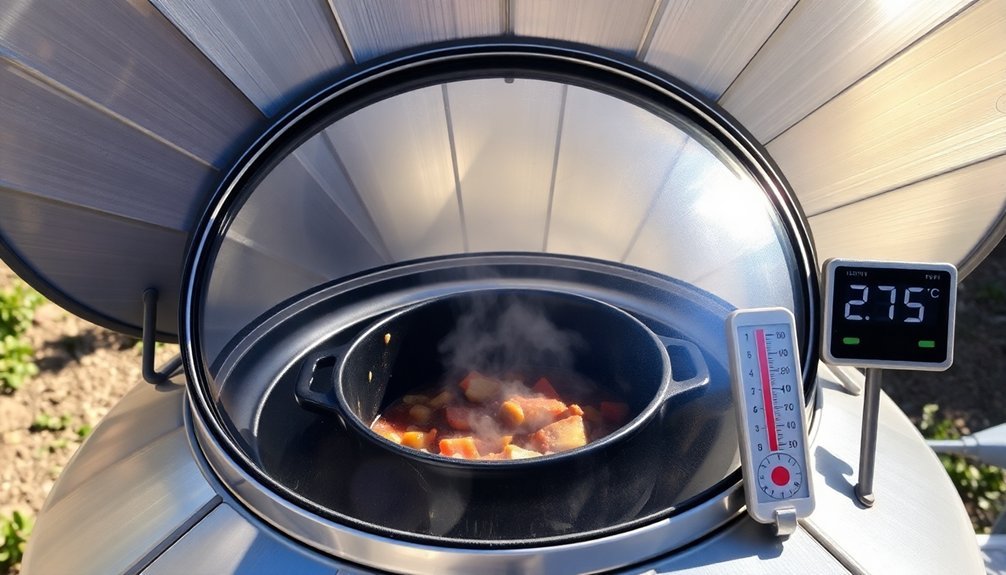

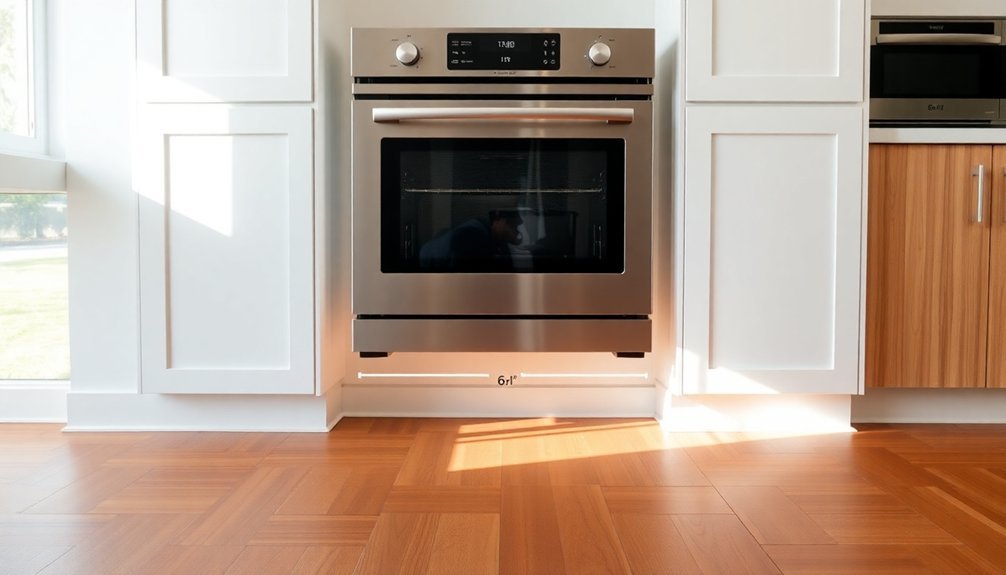
Leave a Reply